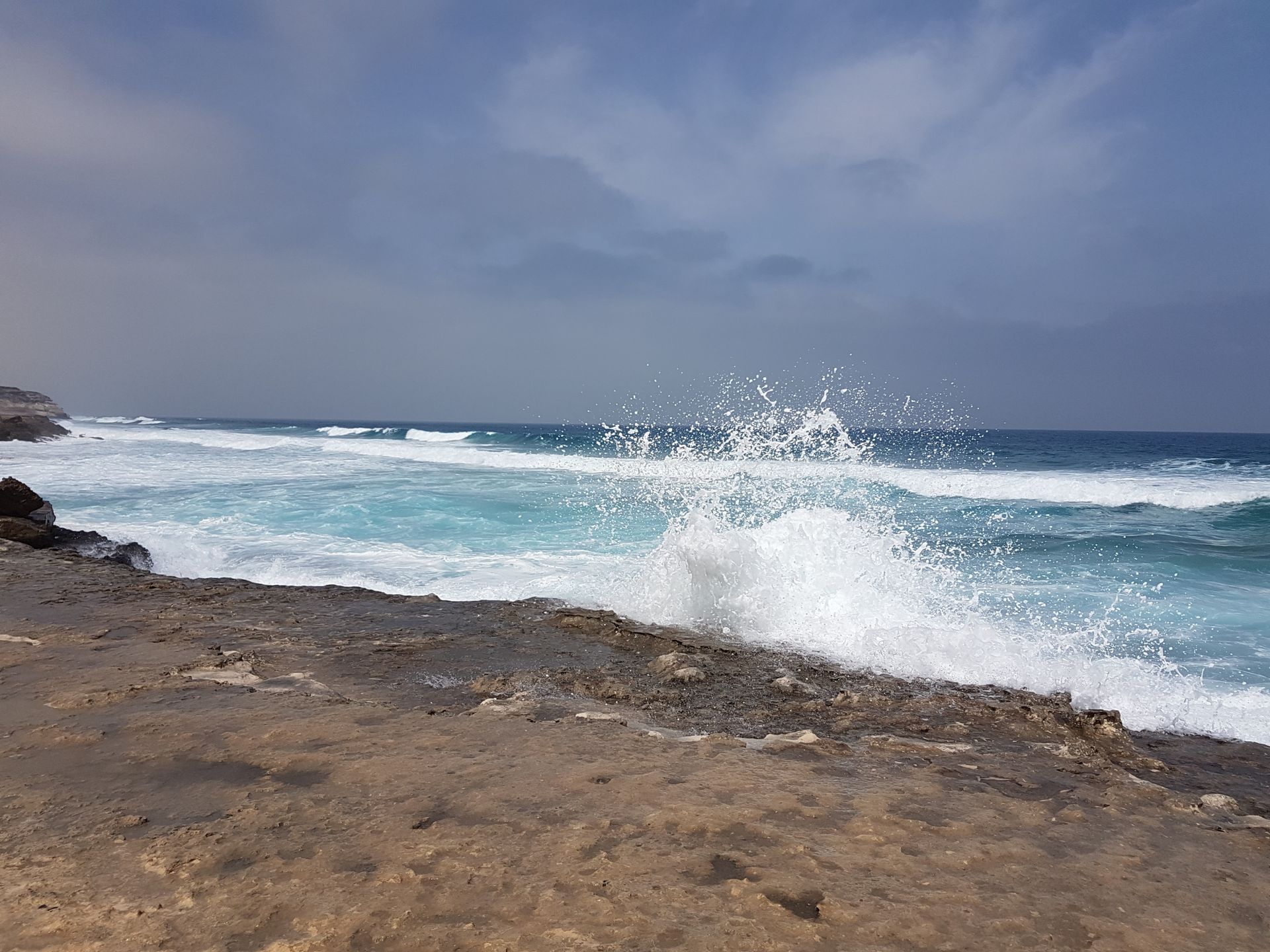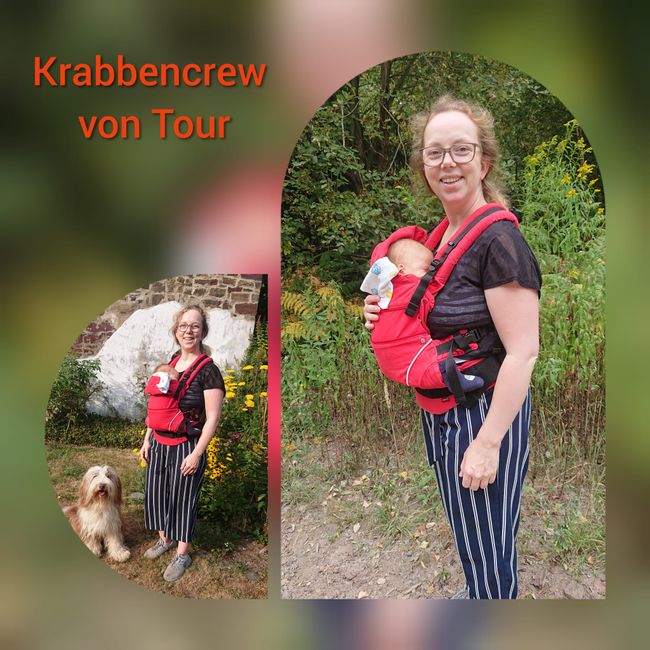
Geschichten vom roten Rucksack 2.0: Die Krabbencrew
vakantio.de/geschichten-vom-roten-rucksack
Surfing & Kualoa Ranch
شايع ٿيل: 19.02.2020
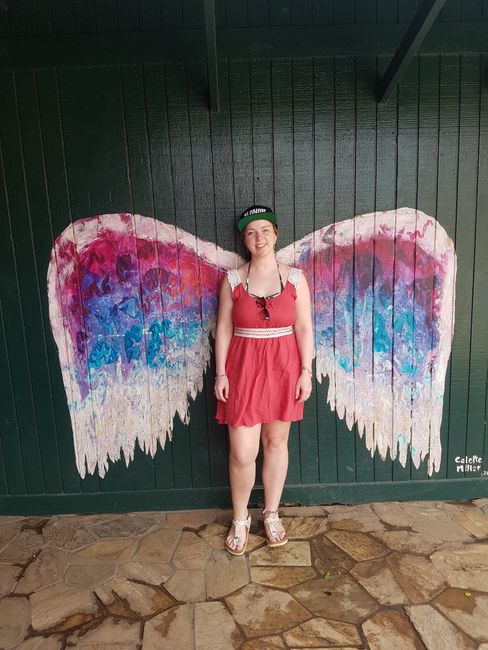
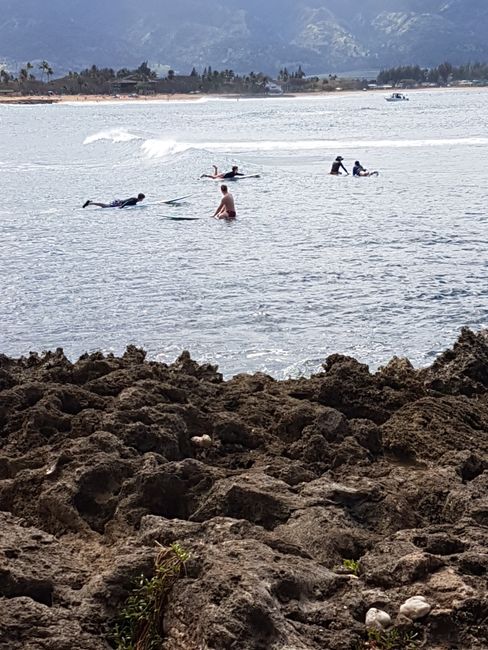
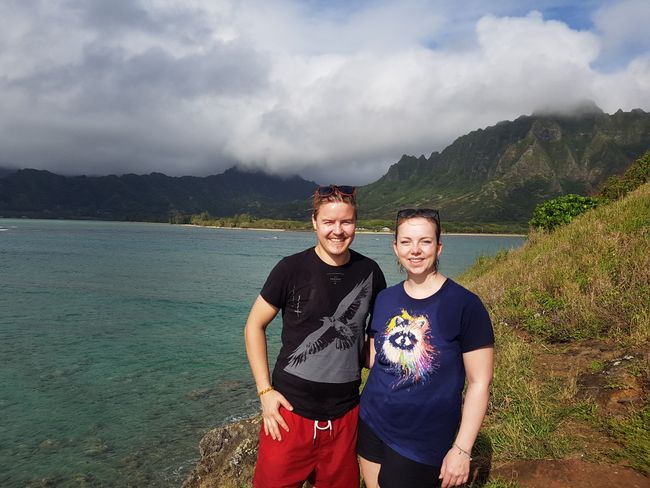

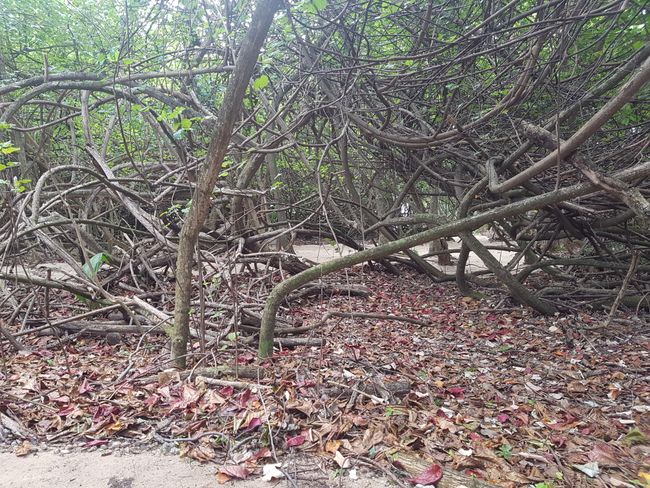
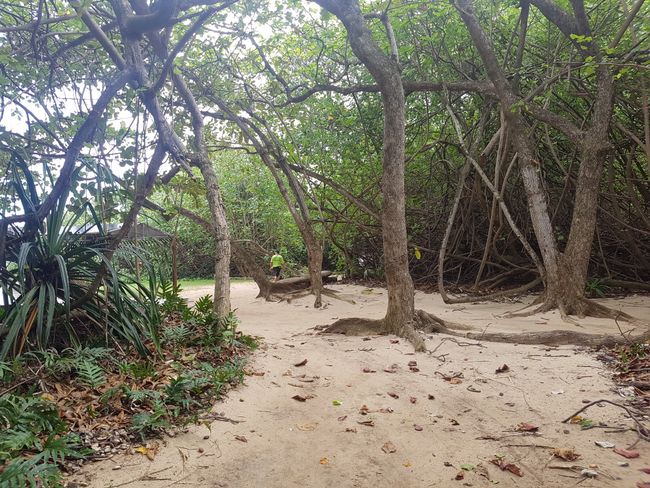
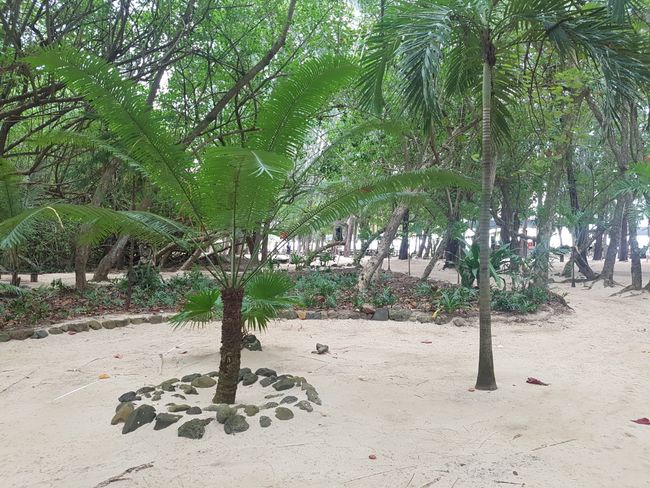
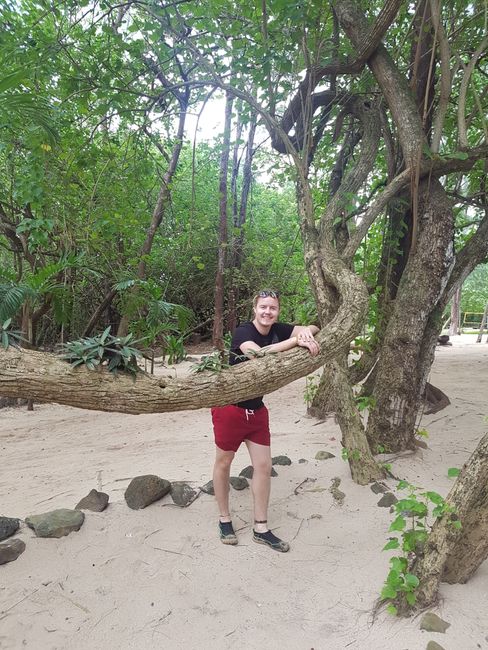
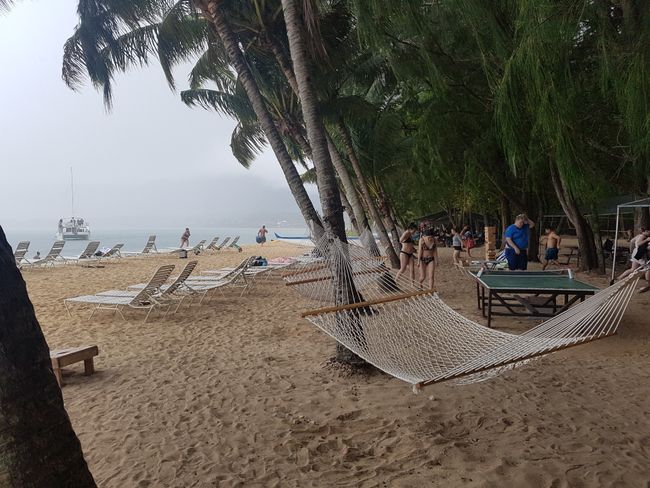
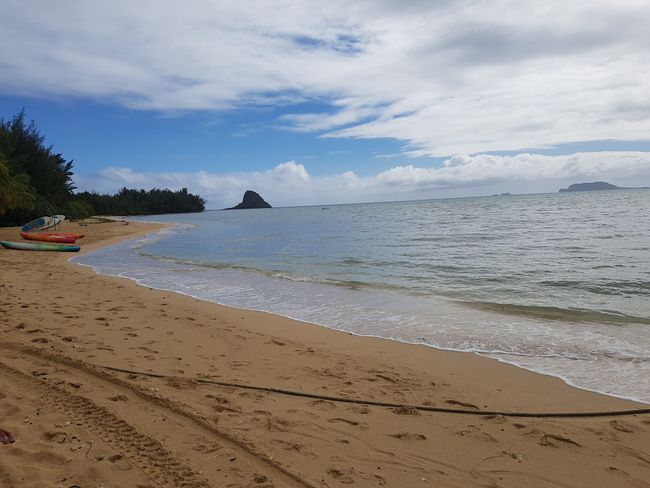
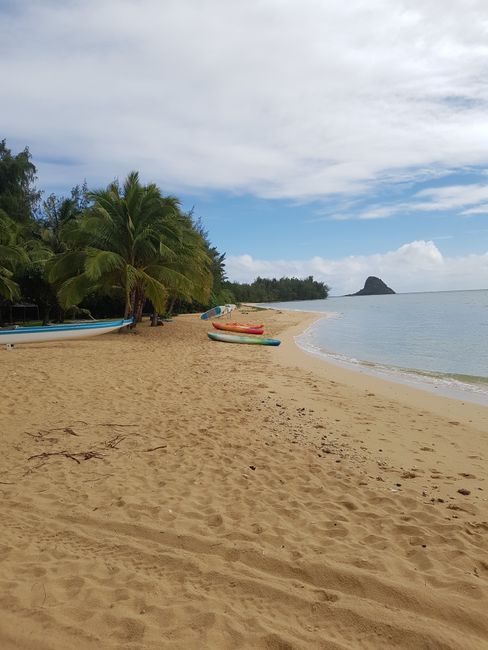
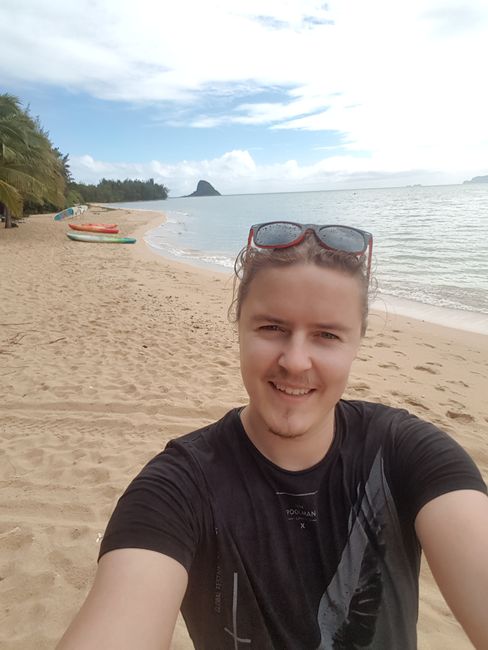
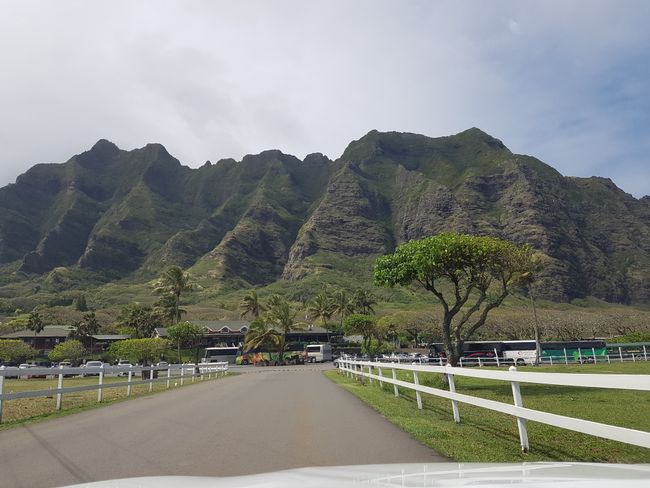
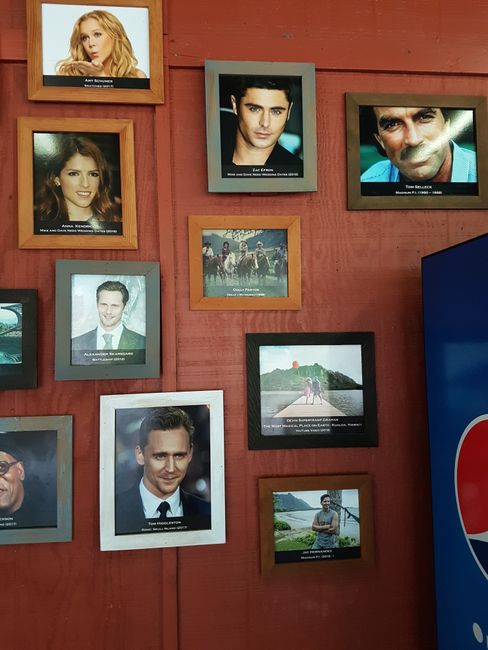
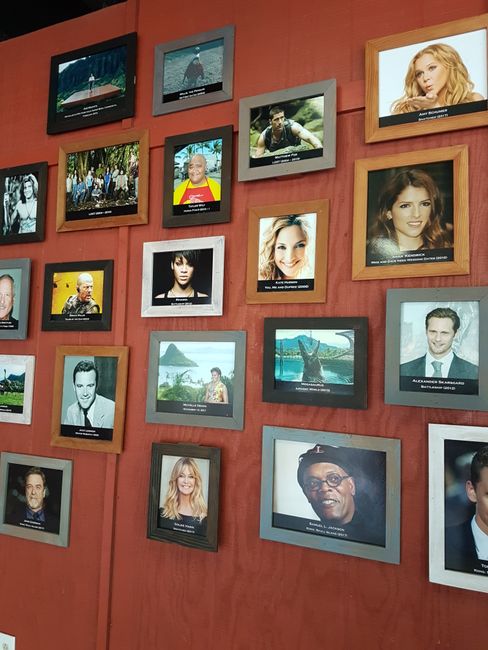
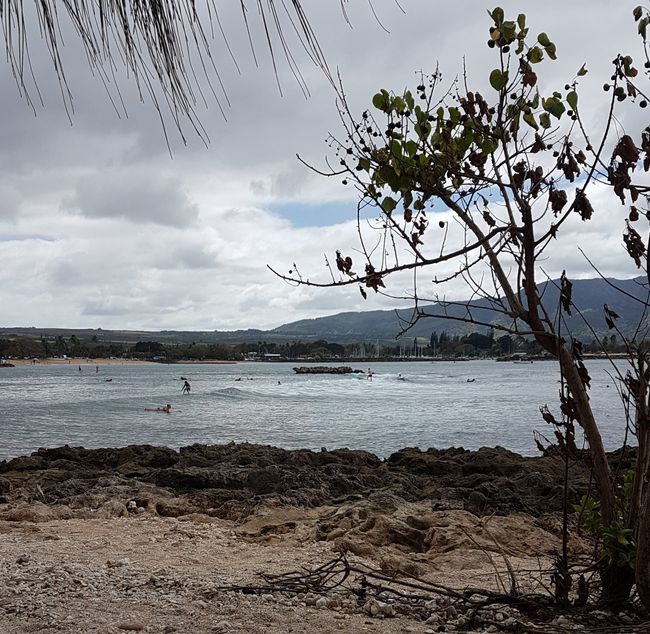
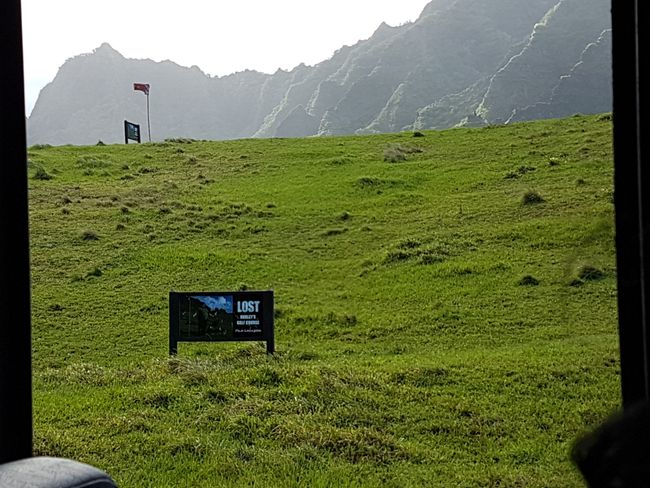
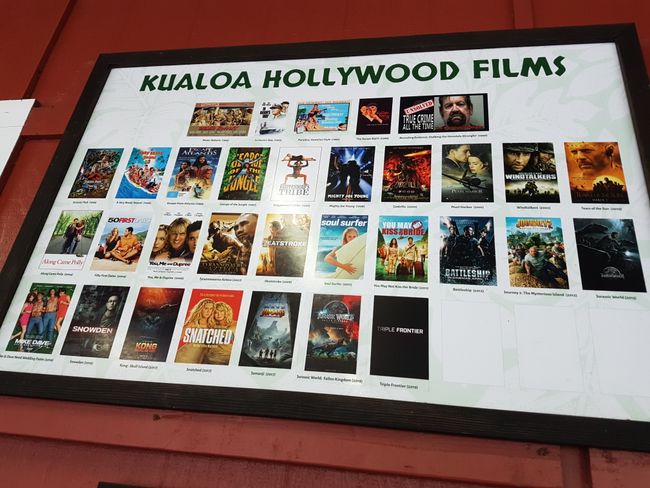
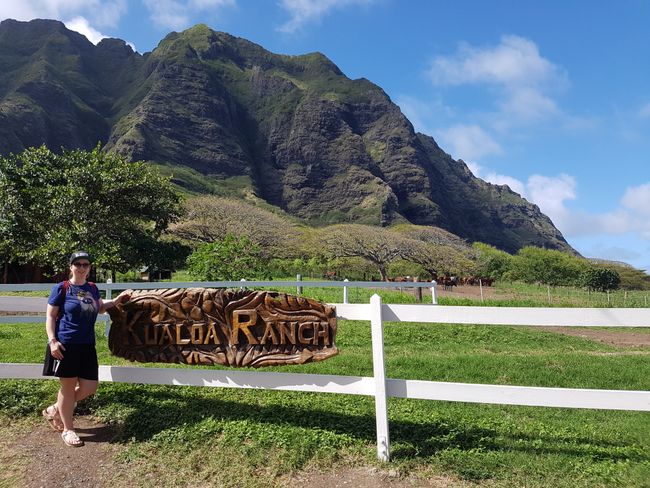
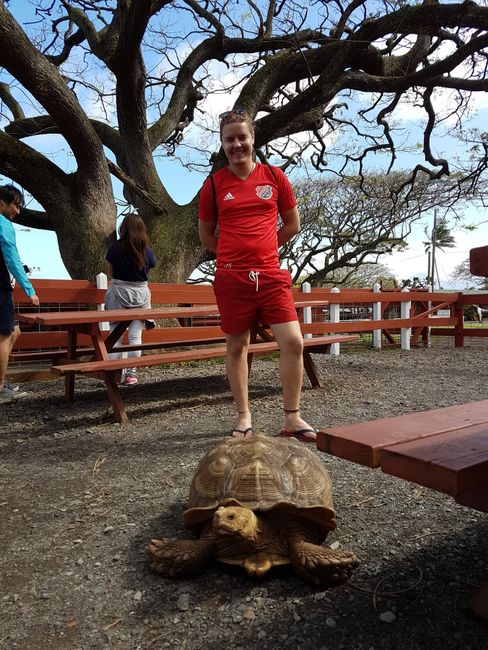
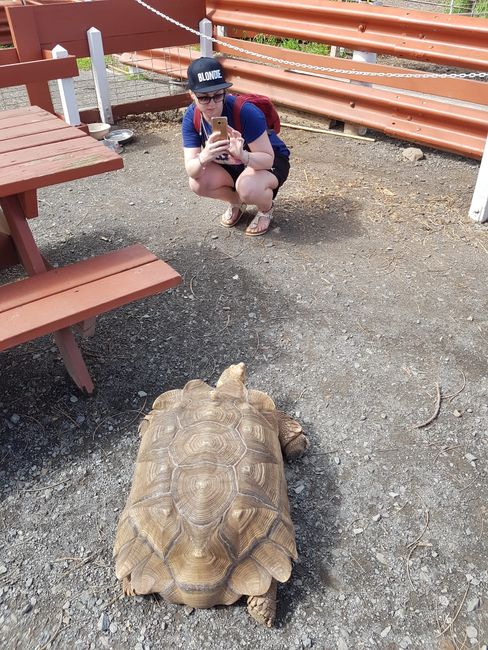
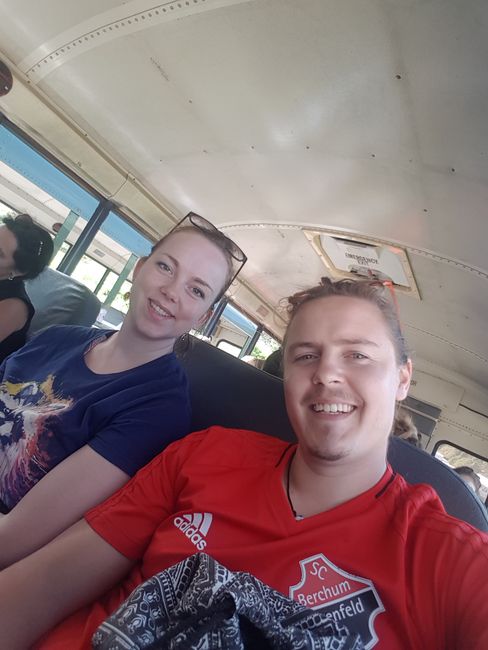
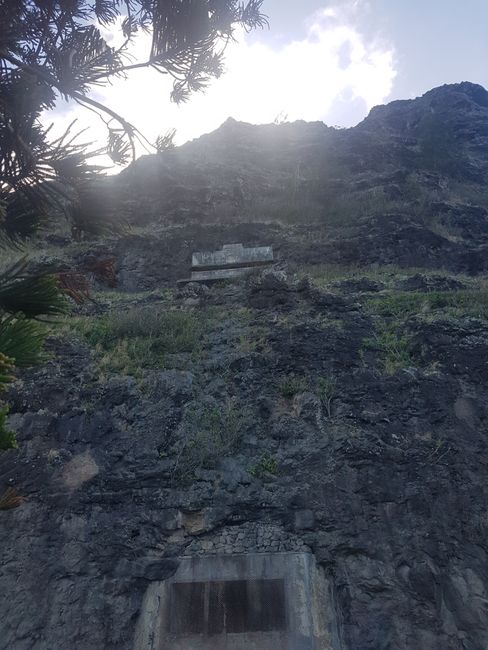
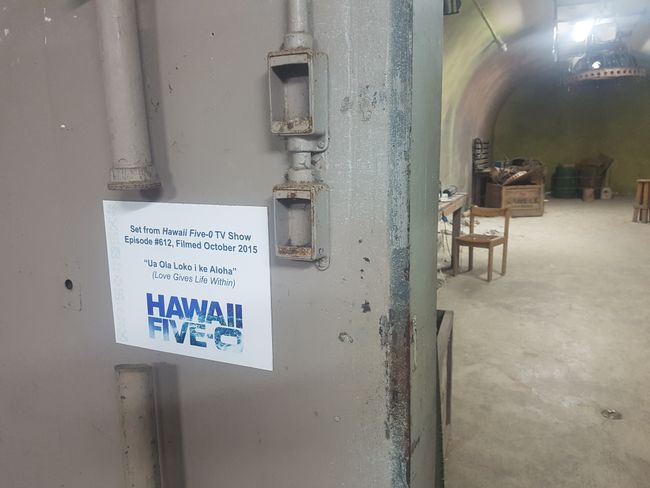
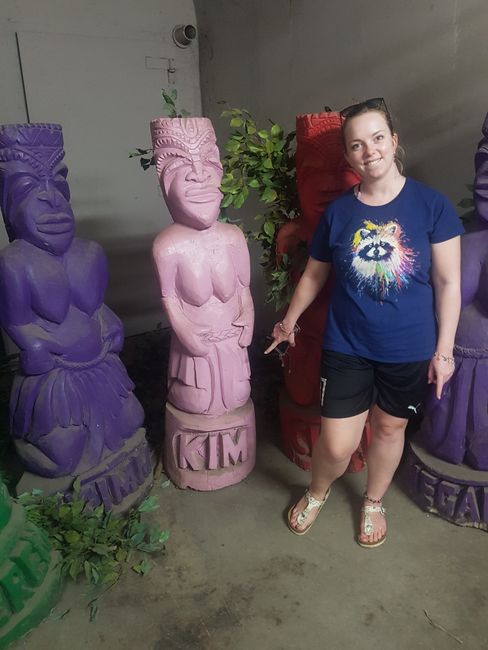
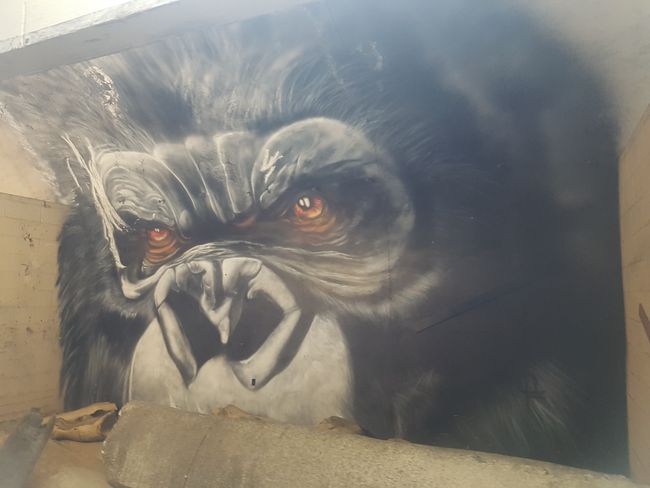
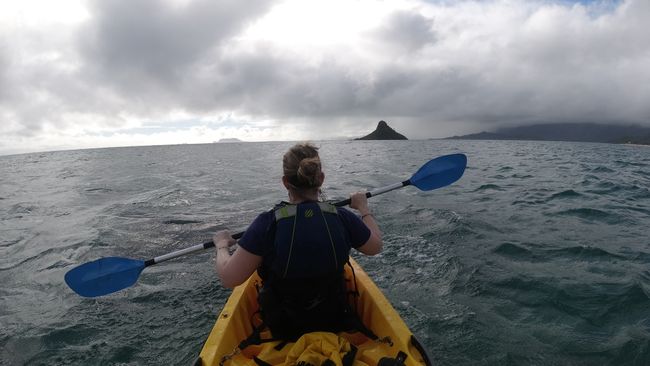
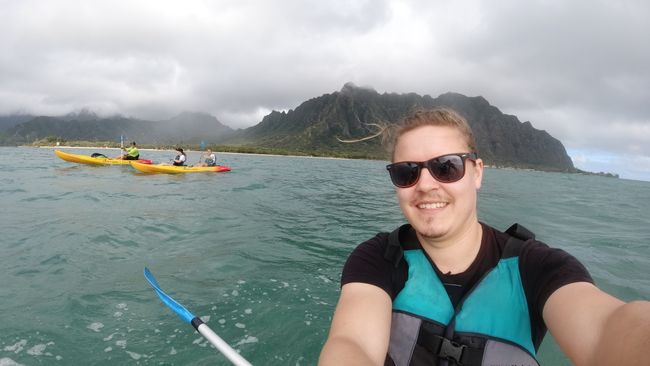
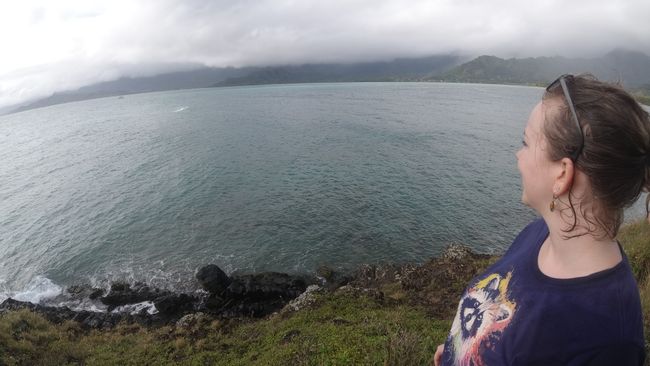
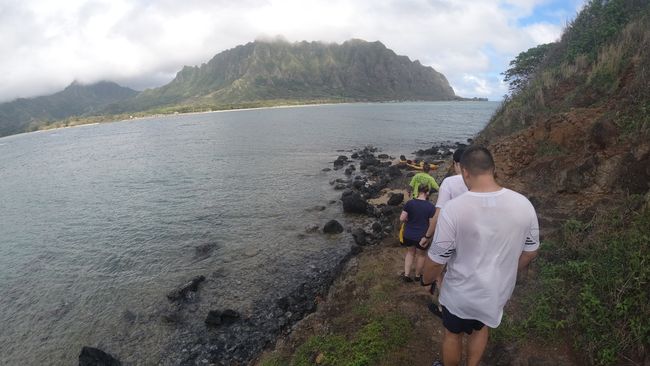
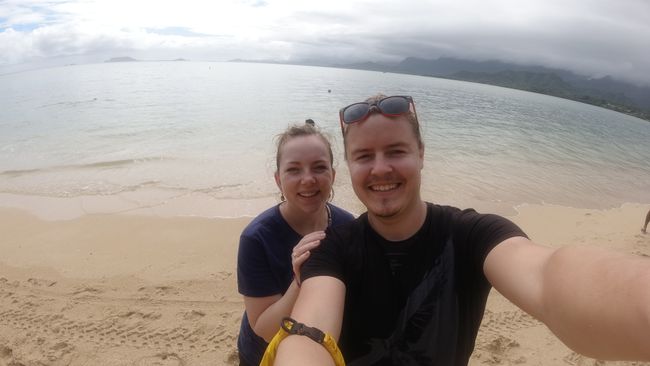
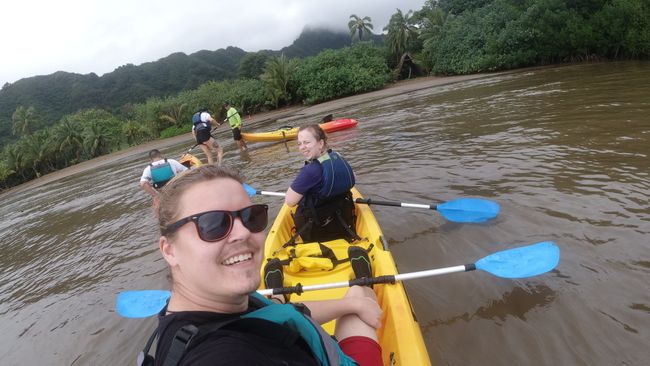
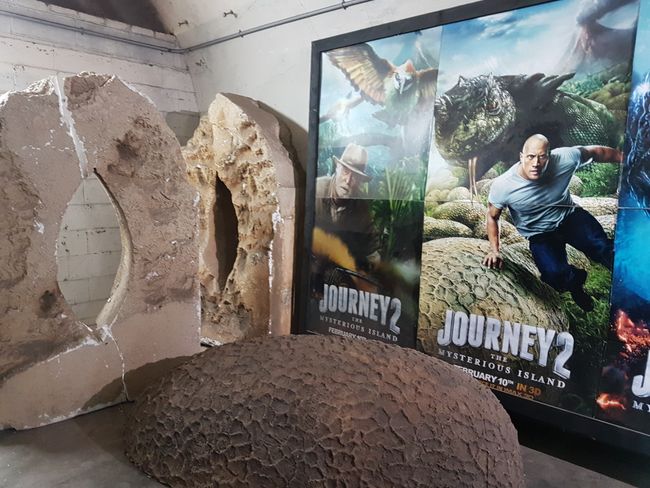
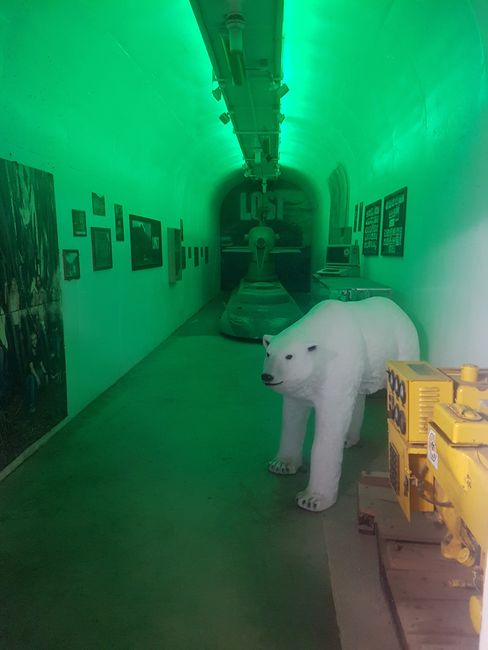
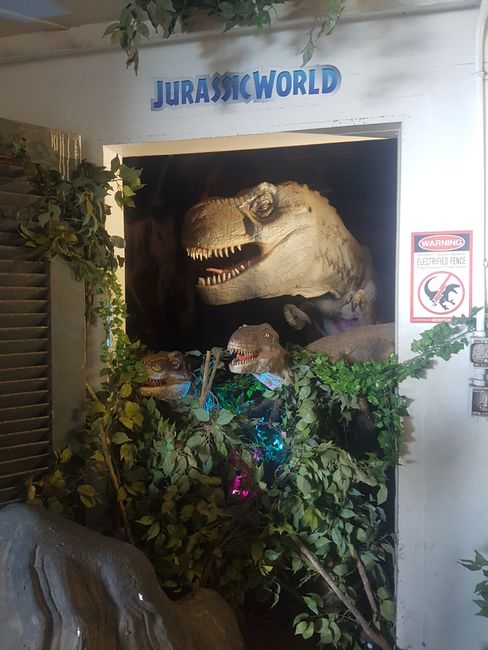
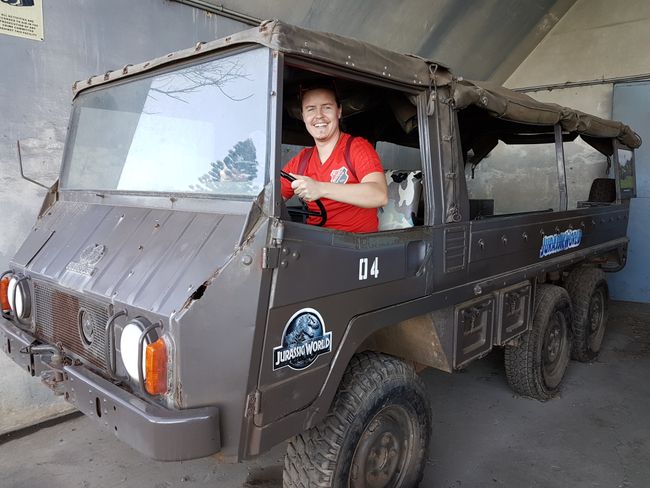
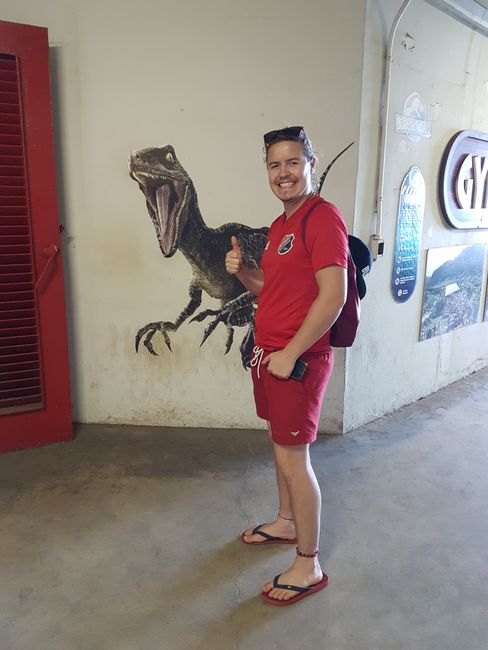
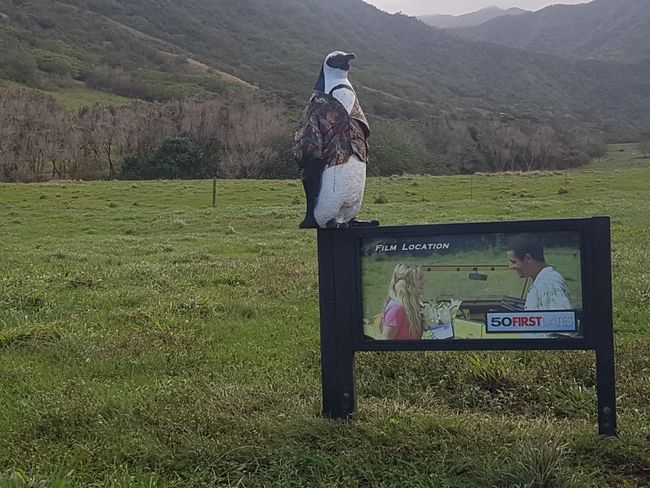
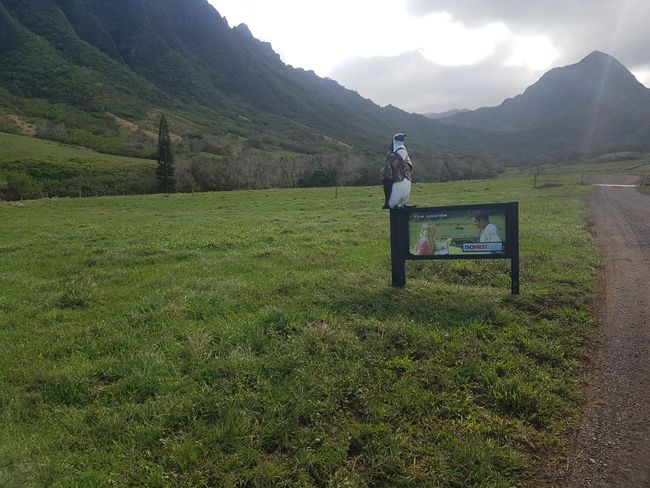
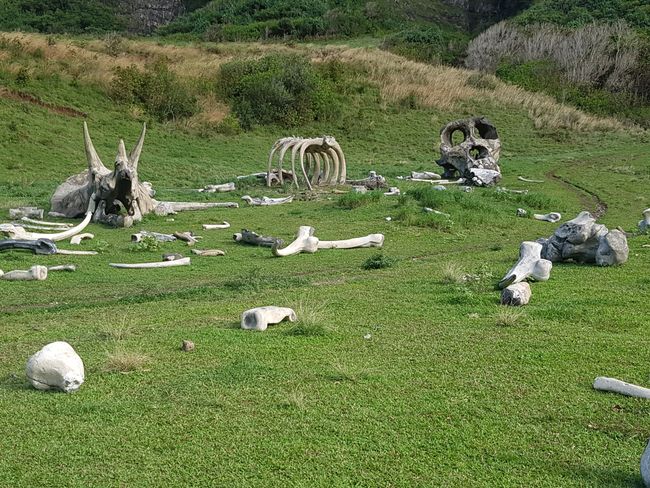
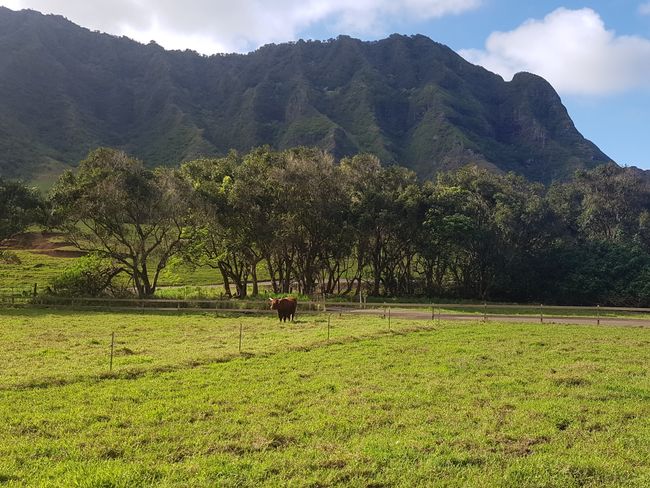
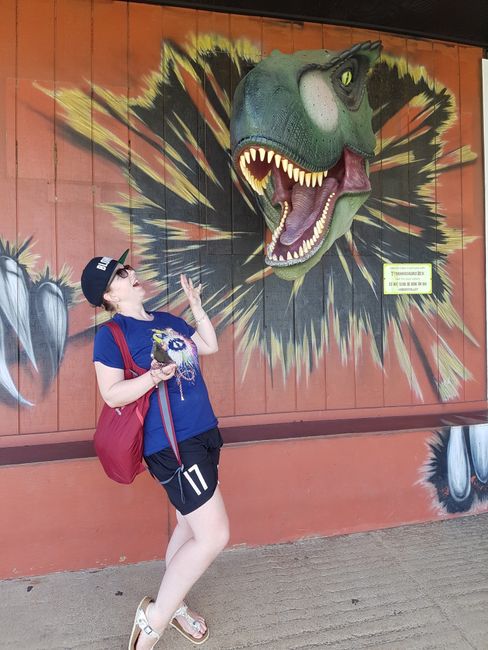
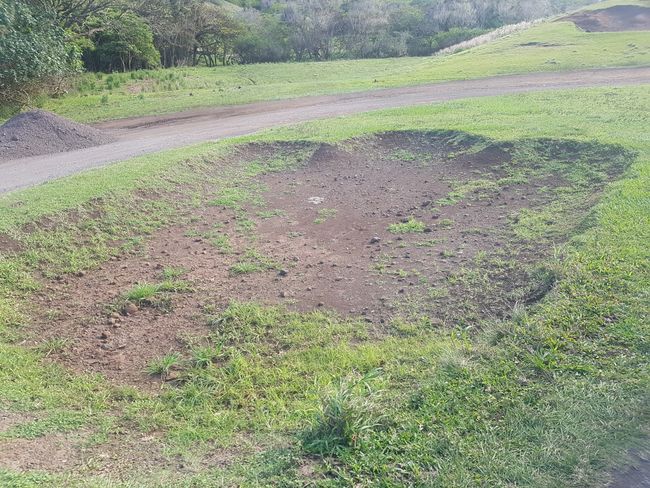
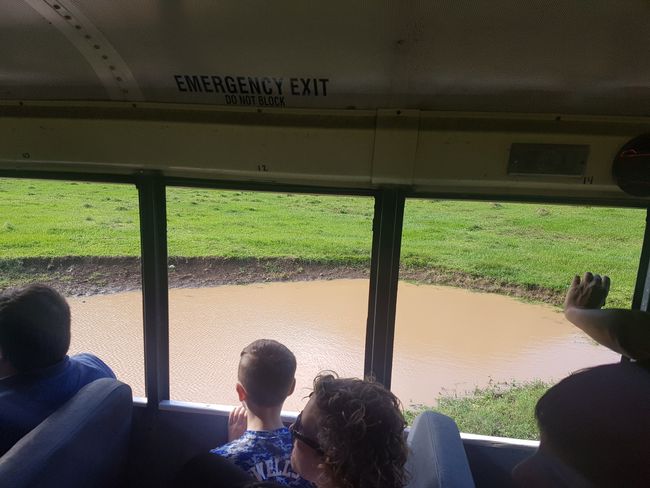
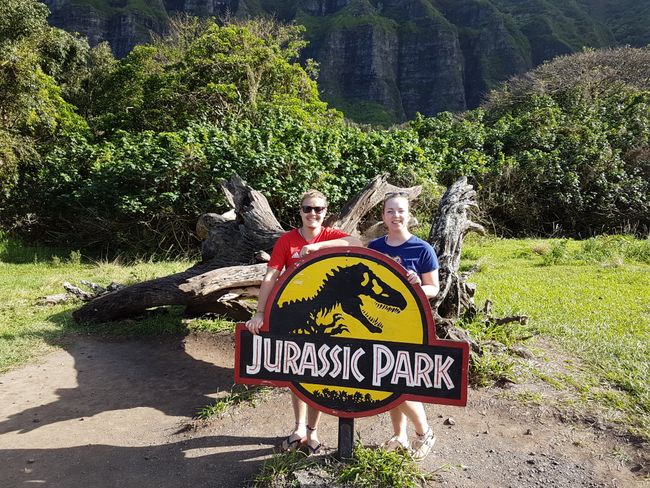
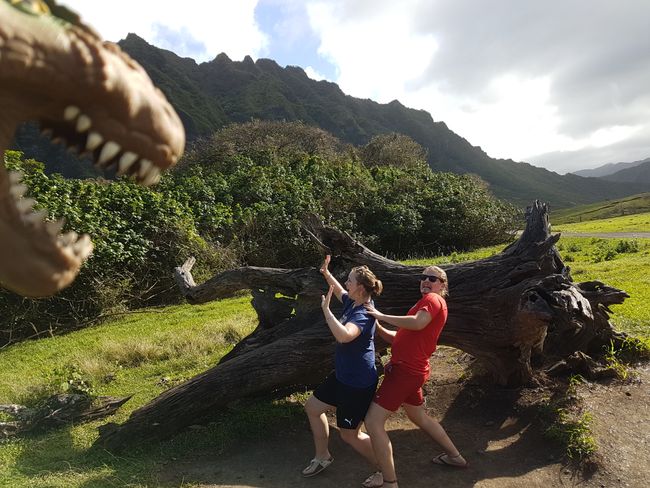
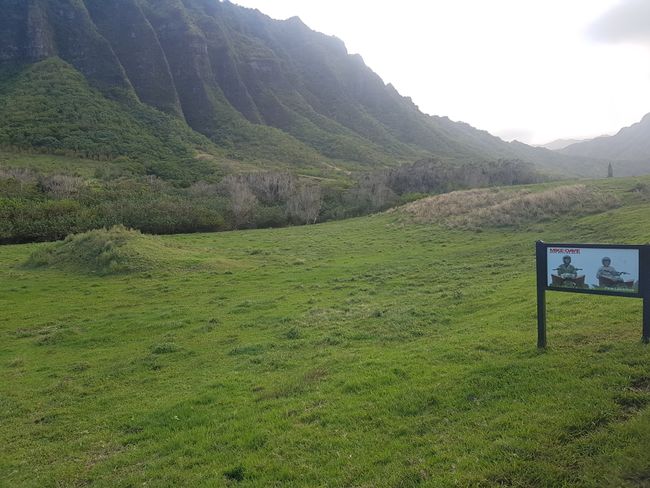
نيوز ليٽر جي رڪنيت حاصل ڪريو
Yesterday we went surfing in Haleiwa. The waves are supposed to be smaller and more beginner-friendly here.
Before we rented surfboards, we walked through the small shopping street. Julian picked out a real Hawaiian shirt and later bought it. Yesterday was the third Monday in February, which is a national holiday called Presidents Day. Besides the closed bank, we didn't notice the holiday.

After the stroll, we went to the beach. There are several surf schools here that offer lessons on the spot. Since I was a little discouraged in the previous days, only Julian rented a surfboard. After surfing for over an hour and standing on the board at least three times, Julian returned the board without me trying my luck. My legs still hurt from the hike two days ago, and besides, the board was so big and wide that I wouldn't have been able to handle it. Oh well! Maybe I'll try it on the next island we visit tomorrow.
Other than that, we didn't do much for the rest of the day because my legs were so tired.


This morning, we got up very early and drove to Kualoa Ranch.

In the morning, we started with a kayak tour. The tour was really exciting because there were only two of us in a small kayak. In total, there were only three boats, one of which was driven by our guide. First, we went from the coast to Chinaman's Hat. On the way there, we were caught in a shower and got really wet. Our guide then told us a bit about the wildlife on Hawaii on the island. Then we continued to Secret Island. This is a beach that can only be accessed through a booked tour of the ranch. Since the ranch is completely private, all places here can only be reached through paid tours. On Secret Island, you could have a lot of fun: there are volleyball fields, table tennis tables, hammocks, an oversized 'Connect Four', and much more. After a short walk to the other side, it started to rain again. But this time really heavy! The sky opened up and poured everything down on us. Fortunately, we were standing under a tent. After a short break and when it stopped raining, we got back in our kayaks and paddled on. The next stop was the last stop - we and the kayaks were picked up from the beach and taken back to the ranch. The tour was really fun, and our guide was able to provide us with a lot of information about the ranch and Hawaii.
It was especially fun to surf on a wave with the kayak! What I didn't dare to do yesterday, I did today, although not on a surfboard. The wave pushed us so fast that we could save a few paddles.








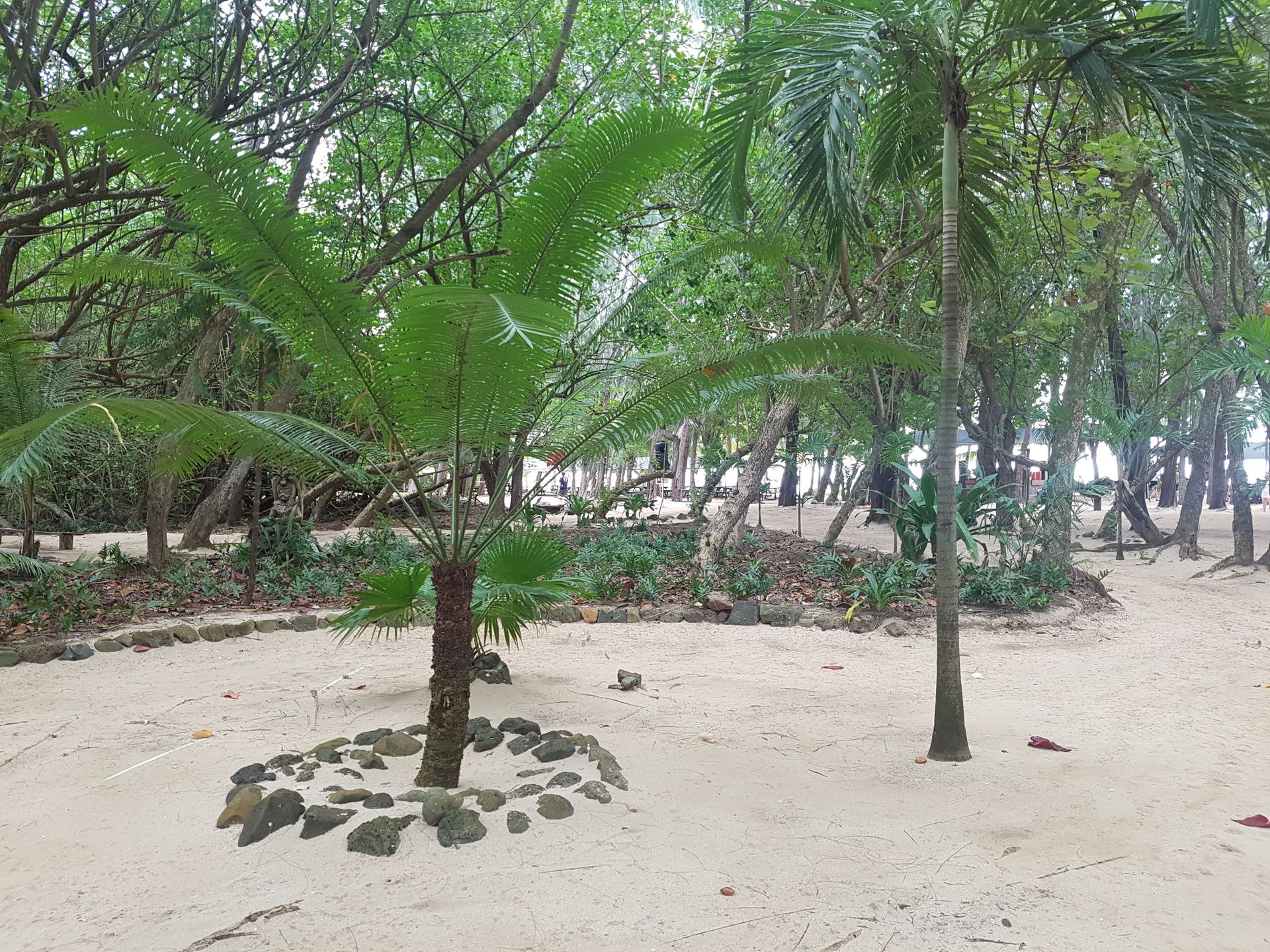







Before the next tour started, we changed into dry clothes. Unfortunately, I didn't pack any spare clothes, so I ended up wearing Julian's pants and shirt, and he had to pass the time with his wet pants. A few minutes away from the ranch, after a small snack, I tried to dry my clothes from the moving car. I can hear Mom's voice in my head now: 'If your head wasn't attached, you would forget it too.' I think Julian thought the same thing at that moment. :)
When we got back, we had a few minutes left to explore the ranch. We looked at the horse pastures and the small zoo. There were two large turtles and two goats, a pig and a donkey, but they were sleeping and dozing in the midday heat.

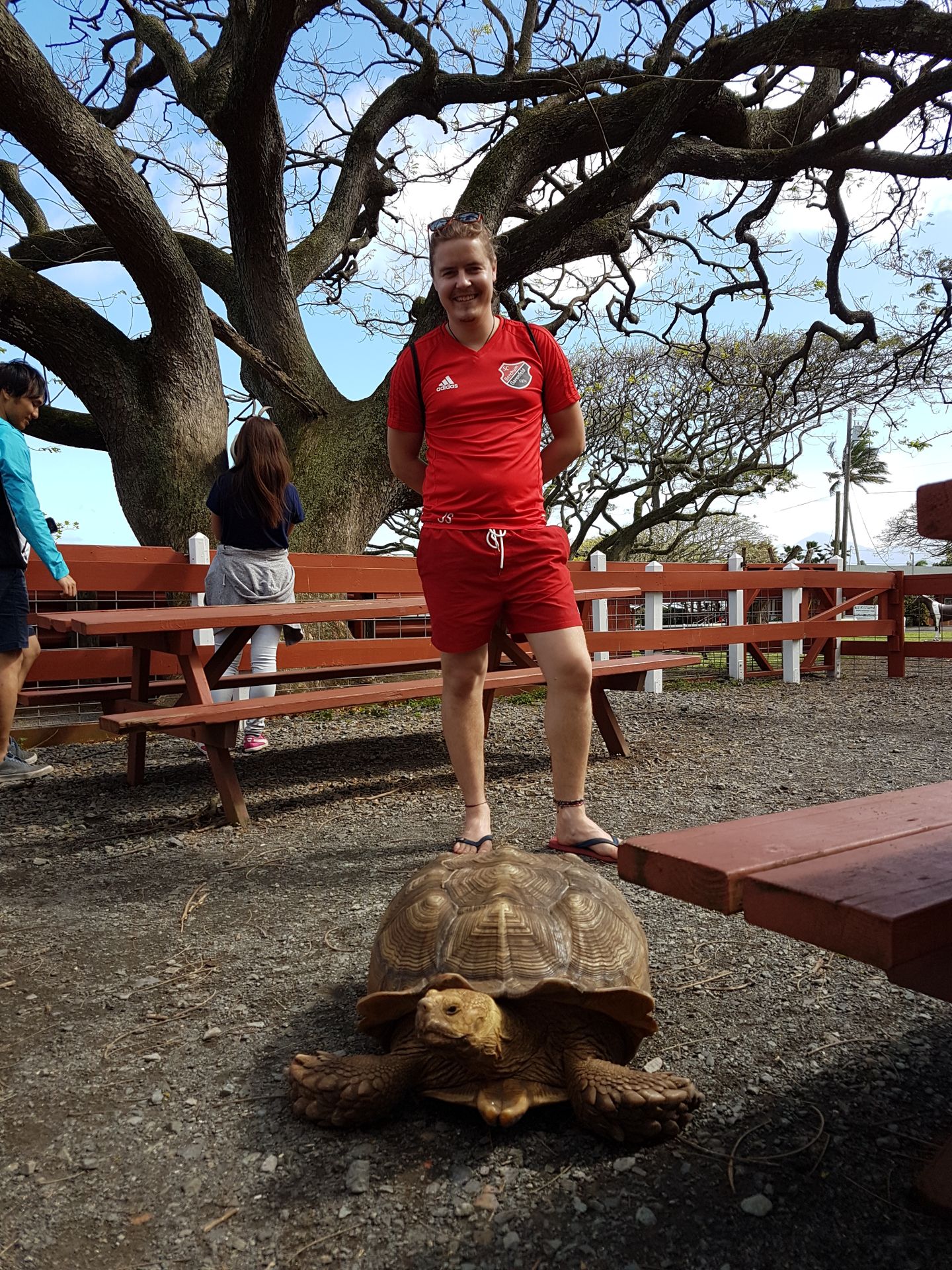


The next tour we booked was a movie tour. We sat in an old school bus with a few others. The tour was particularly lovely thanks to Keoni, our guide! He was able to tell us a lot about the individual stops, movies, and the history of the ranch. He also told us a lot about himself. In between, he taught us some Hawaiian terms that we had to repeat loudly:
Kuleana, which means responsibility.
Pipi, which means cow.
Bunkers from World War II can be found all over the island, including on the ranch. Previously, airplanes used to take off directly from here. It's hard to imagine. But we were even able to go into a bunker. It was carved into the mountain and showed some things from that time. As we continued, we could see several movie scenes set up again.
I found it particularly exciting that most goods have to be imported and that the Hawaiians are therefore always dependent on the "outside world". The ranch grows many different foods themselves. For example, we passed banana, avocado, and cocoa trees. But the farm also has many animals, such as cows and cattle, various types of fish, sheep, pigs, and chickens.
In the end, Keoni tells us that here you don't say Goodbye, but A hui hou, which means 'we will see each other again'.


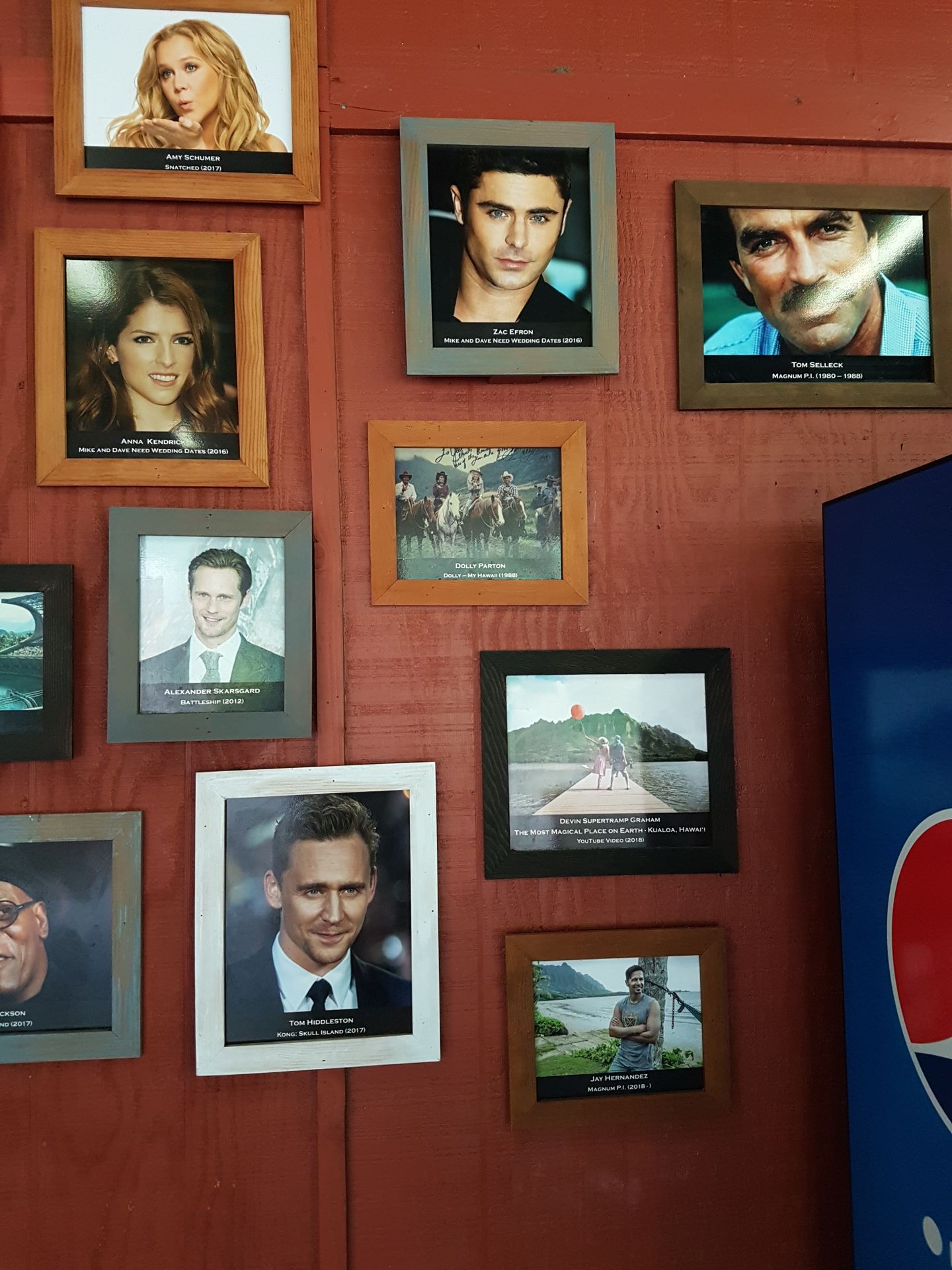





















Before the next tour started, we changed into dry clothes. Unfortunately, I didn't pack any spare clothes, so I ended up wearing Julian's pants and shirt, and he had to pass the time with his wet pants. A few minutes away from the ranch, after a small snack, I tried to dry my clothes from the moving car. I can hear Mom's voice in my head now: 'If your head wasn't attached, you would forget it too.' I think Julian thought the same thing at that moment. :)
When we got back, we had a few minutes left to explore the ranch. We looked at the horse pastures and the small zoo. There were two large turtles and two goats, a pig and a donkey, but they were sleeping and dozing in the midday heat.




The next tour we booked was a movie tour. We sat in an old school bus with a few others. The tour was particularly lovely thanks to Keoni, our guide! He was able to tell us a lot about the individual stops, movies, and the history of the ranch. He also told us a lot about himself. In between, he taught us some Hawaiian terms that we had to repeat loudly:
Kuleana, which means responsibility.
Pipi, which means cow.
Bunkers from World War II can be found all over the island, including on the ranch. Previously, airplanes used to take off directly from here. It's hard to imagine. But we were even able to go into a bunker. It was carved into the mountain and showed some things from that time. As we continued, we could see several movie scenes set up again.
I found it particularly exciting that most goods have to be imported and that the Hawaiians are therefore always dependent on the "outside world". The ranch grows many different foods themselves. For example, we passed banana, avocado, and cocoa trees. But the farm also has many animals, such as cows and cattle, various types of fish, sheep, pigs, and chickens.
In the end, Keoni tells us that here you don't say Goodbye, but A hui hou, which means 'we will see each other again'.
























Before the next tour started, we changed into dry clothes. Unfortunately, I didn't pack any spare clothes, so I ended up wearing Julian's pants and shirt, and he had to pass the time with his wet pants. A few minutes away from the ranch, after a small snack, I tried to dry my clothes from the moving car. I can hear Mom's voice in my head now: 'If your head wasn't attached, you would forget it too.' I think Julian thought the same thing at that moment. :)
When we got back, we had a few minutes left to explore the ranch. We looked at the horse pastures and the small zoo. There were two large turtles and two goats, a pig and a donkey, but they were sleeping and dozing in the midday heat.




The next tour we booked was a movie tour. We sat in an old school bus with a few others. The tour was particularly lovely thanks to Keoni, our guide! He was able to tell us a lot about the individual stops, movies, and the history of the ranch. He also told us a lot about himself. In between, he taught us some Hawaiian terms that we had to repeat loudly:
Kuleana, which means responsibility.
Pipi, which means cow.
Bunkers from World War II can be found all over the island, including on the ranch. Previously, airplanes used to take off directly from here. It's hard to imagine. But we were even able to go into a bunker. It was carved into the mountain and showed some things from that time. As we continued, we could see several movie scenes set up again.
I found it particularly exciting that most goods have to be imported and that the Hawaiians are therefore always dependent on the "outside world". The ranch grows many different foods themselves. For example, we passed banana, avocado, and cocoa trees. But the farm also has many animals, such as cows and cattle, various types of fish, sheep, pigs, and chickens.
In the end, Keoni tells us that here you don't say Goodbye, but A hui hou, which means 'we will see each other again'.
























Before the next tour started, we changed into dry clothes. Unfortunately, I didn't pack any spare clothes, so I ended up wearing Julian's pants and shirt, and he had to pass the time with his wet pants. A few minutes away from the ranch, after a small snack, I tried to dry my clothes from the moving car. I can hear Mom's voice in my head now: 'If your head wasn't attached, you would forget it too.' I think Julian thought the same thing at that moment. :)
When we got back, we had a few minutes left to explore the ranch. We looked at the horse pastures and the small zoo. There were two large turtles and two goats, a pig and a donkey, but they were sleeping and dozing in the midday heat.




The next tour we booked was a movie tour. We sat in an old school bus with a few others. The tour was particularly lovely thanks to Keoni, our guide! He was able to tell us a lot about the individual stops, movies, and the history of the ranch. He also told us a lot about himself. In between, he taught us some Hawaiian terms that we had to repeat loudly:
Kuleana, which means responsibility.
Pipi, which means cow.
Bunkers from World War II can be found all over the island, including on the ranch. Previously, airplanes used to take off directly from here. It's hard to imagine. But we were even able to go into a bunker. It was carved into the mountain and showed some things from that time. As we continued, we could see several movie scenes set up again.
I found it particularly exciting that most goods have to be imported and that the Hawaiians are therefore always dependent on the "outside world". The ranch grows many different foods themselves. For example, we passed banana, avocado, and cocoa trees. But the farm also has many animals, such as cows and cattle, various types of fish, sheep, pigs, and chickens.
In the end, Keoni tells us that here you don't say Goodbye, but A hui hou, which means 'we will see each other again'.




























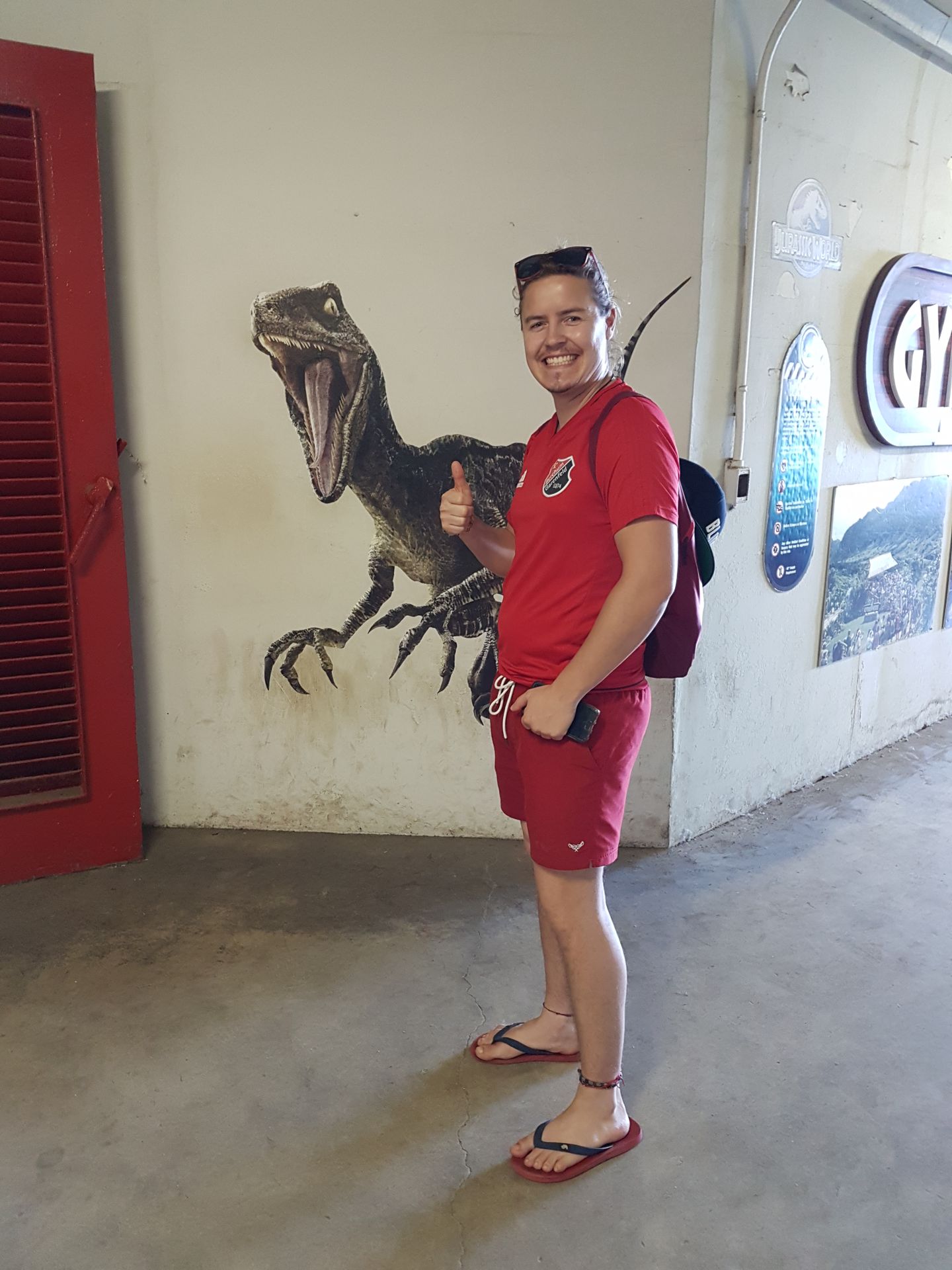




These bones had to be kept secret two years before filming because the cows started nibbling on the bones, which apparently consist of a tasty material.

This cow receives its retirement at the ranch. Keoni used to feed her all the time. She looked interested in our direction when she heard Keoni's voice.


We learned that the difference between the Asian and American Godzilla is the number of toes! In case we ever win money on a TV show with this question, we should think of Keoni. So that you also have good chances of winning: the Asian Godzilla has three toes, and the American Godzilla has five toes.



After the tour, we drive home because we have to pack our backpacks again. Tomorrow we will fly back to the airport and fly to Hilo on the island of Big Island.
You will hear the next stories from Hilo!
A hui hou!
نيوز ليٽر جي رڪنيت حاصل ڪريو
جواب (1)
Youkiki07
Liebe Kim, ich liebe Deine Fotos und die Storys dazu. Es ist toll ein bisschen dabei zu sein. Und ich werde Eure Reise gespannt weiter verfolgen. Mega, dass Du diesen Schritt gewagt hast. Das sind Erinnerungen fürs Leben. Neiiiiiiiiiiiiid 😂 ... ich freue mich so sehr für Dich und bin gespannt wie es weiter geht. Ganz liebe Grüsse, Kati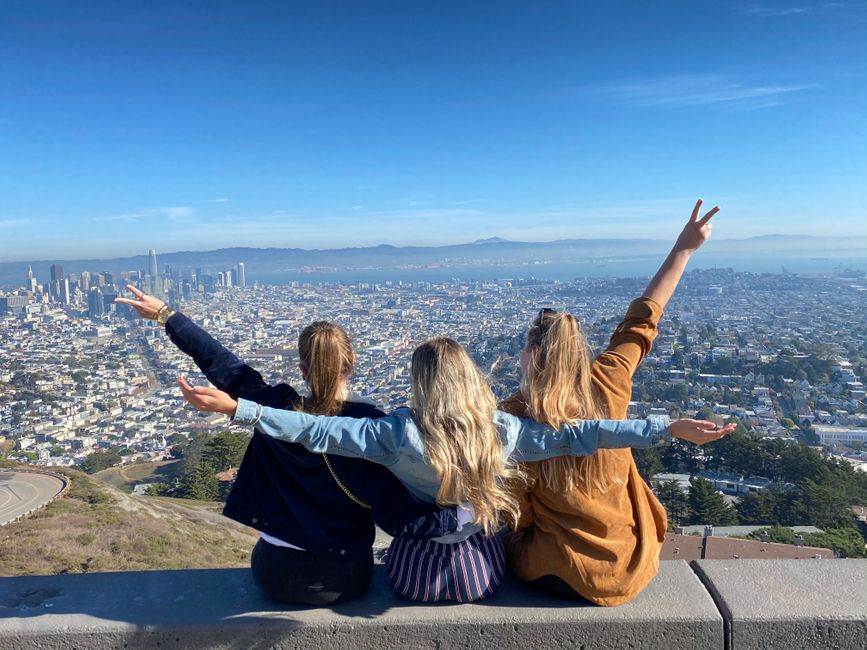
سفر جون رپورٽون آمريڪا
